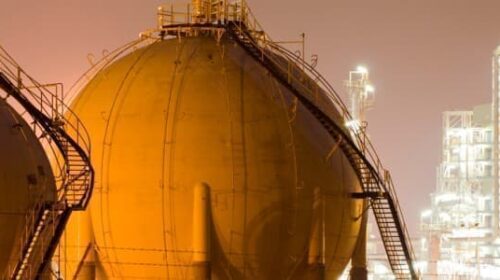In the past and under normal circumstances, spot LNG has experienced peaks and troughs in demand and pricing mostly based on seasonal peaks for summer and winter in the main northern hemisphere markets of Europe and North Asia. However, the current LNG market has continued to defy these conventions, with the spot price softening considerably ahead of winter despite heightened demand. The price of JKM contracts ended at $27.23 per million British thermal units (mmBtu) on Monday, 61% lower from the record high of $69.96 per mmBtu reached on Aug. 25 when the markets feared Europe would be going into winter with insufficient supplies. Indeed, the current spot price is even lower than the $31.61 per mmBtu that prevailed at this time last year.
There are several factors as well as a constant interplay of individual pressures on market supply and demand that could explain this anomalous situation. First off, natural gas inventories in the leading markets in Europe and Asia are relatively high, with Europe’s gas stores currently more than 95% full.
The EU had set a target to have its storage sites 80% full by Nov. 1, meaning the bloc is running ahead of schedule. Nevertheless, filling continues ahead of winter to avoid power rationing and industry shutdowns with deliveries from major supplier Russia down to a trickle. According to S&P Global, the tank-top situation is forcing LNG importers to ask suppliers to push delivery dates further out or delay shipments by extending waiting times for LNG carriers.
The second factor is that expectations of a milder-than-expected winter might be limiting competition while availability of Russian LNG is easing market tightness.
It’s Interesting to note that whereas supplies of Russian pipeline gas are a small fraction of what they used to be, Europe has been hungrily scooping up Russian LNG. The Wall Street Journal has reported that the bloc’s imports of Russian liquefied natural gas jumped by 41% Y/Y in the year through August.
“Russian LNG has been the dark horse of the sanctions regime,” Maria Shagina, research fellow at the London-based International Institute for Strategic Studies, has told WSJ.
Importers of Russian LNG to Europe have argued that the shipments are not covered by current EU sanctions and that buying LNG from Russia and other suppliers has helped keep European energy prices in check. Russian LNG now makes up 8% of Europe’s imports.
But it’s not all doom and gloom for the gas bulls. According to commodity analysts Kpler via Reuters, there are growing signs that LNG demand is ticking higher ahead of the winter season, with November imports in both Europe and Asia projected to rise.
According to Kpler, Europe’s imports are expected to reach 11.49 million tonnes in November, up from 10.13 million tonnes in October and not far from this year’s record high of 11.55 million tonnes recorded in January.
The United States continues to supply the bulk of Europe’s LNG, with exports of 4.66 million tonnes expected in November, up from 4.17 million in October. Europe has displaced Asia as the top destination for the U.S. LNG, and now receives 65% of total exports. The EU has pledged to reduce its consumption of Russian natural gas by nearly two-thirds before the year’s end while Lithuania, Latvia and Estonia have vowed to eliminate Russian gas imports outright.
Nevertheless, Europe is expected to import another 1.32 million tonnes of LNG from Russia in November, up from 1.05 million in October.
Meanwhile, Asia is on track to import 22.12 million tonnes of LNG in November, lower than the 22.55 million recorded for November 2021 but higher than October’s 20.72 million. Kpler says that the LNG markets can also expect to see more activity from China.
China’s LNG importers have been rather muted this year due to high prices that prevailed for much of the year. But with spot prices now low, Kpler says they are returning to the market and are projected to purchase 6.2 million tonnes of LNG in November, up from 4.9 million tonnes in October.
The million-dollar question right now is whether growing demand will be enough to cure the malaise currently being witnessed in the gas markets. Unfortunately, at the moment, the outlook is not good for the bulls with U.S. nat. gas prices continuing their slide this week after Freeport LNG told customers that outages at its Texas terminal could be delayed further. Located in Freeport, Texas, the terminal–which accounts for 15% of all U.S. LNG exports–has been closed since June and was scheduled to reopen by mid-November.





